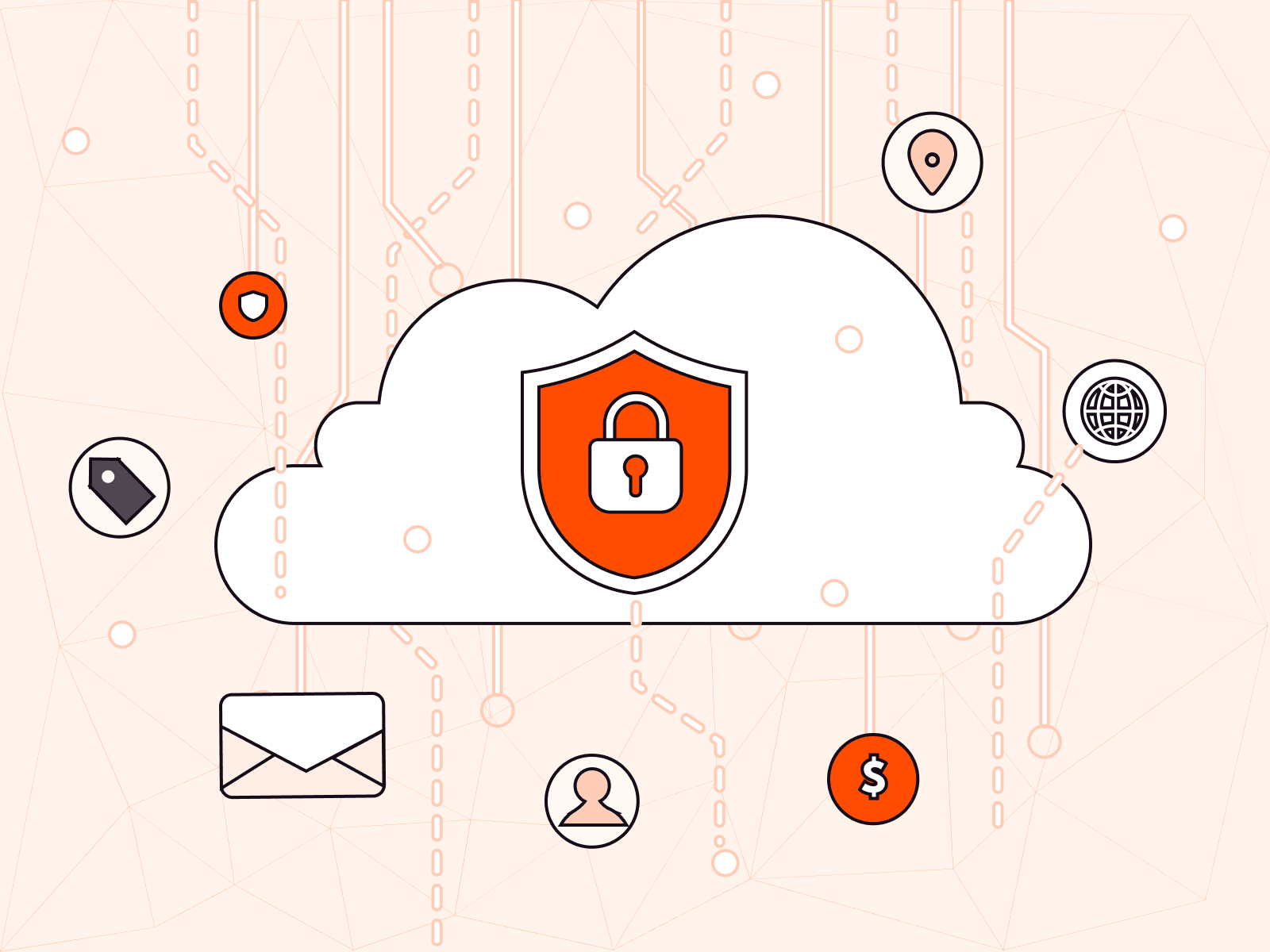What is edge security? Who needs it and why?
- December 9, 2024
- 5 min read

Edge security refers to protecting data, applications, and workloads at the “edge” of a network, close to where users and devices connect, rather than relying solely on centralized security measures. It addresses risks arising from distributed environments, such as IoT devices, remote work setups, and edge computing nodes, because threats are mitigated close to their origin. Edge security helps maintain robust defenses against cyberattacks while enabling fast and reliable access to resources.
Edge security is particularly relevant for content delivered via content delivery networks (CDNs) because CDNs operate at the edge of the network, distributing and accelerating content from servers located close to users and making them a critical point for securing data and applications. While CDNs do an excellent job of caching and delivering content swiftly across different regions, they don’t fully protect applications or networks against sophisticated attacks. This is where edge security comes into play, adding an essential layer of protection by intercepting threats right at the network’s entry points.
Why is edge security necessary?
CDNs are a backbone of the modern internet, widely used across industries with high traffic and performance demands. At their core, CDNs are built for performance. They distribute content across servers worldwide, reducing latency and easing bandwidth usage. CDNs pass information through a distributed network, caching content physically close to the end users. This lowers latency and improves user experience.
CDNs typically integrate security measures, such as encrypting content with SSL/TLS to ensure secure data transmission and managing certificates to authenticate applications. These certificates are periodically updated to minimize the risk of exploitation by attackers. However, vulnerabilities can still arise. For example, SSL connections are usually terminated at the edge, which protects data in transit, but gaps may remain if additional protective layers are not implemented. SSL traffic that terminates at the CDN edge is further encrypted when forwarded to the origin server for protection during transmission. Both the connection between the client and the CDN, as well as the connection between the CDN and the origin, are encrypted using SSL/TLS, minimizing the risk of code injection or data compromise.
CDNs primarily focus on content delivery and are not designed to prevent application-layer attacks, such as SQL injection or cross-site scripting, which exploit code flaws or API endpoint vulnerabilities. These types of threats are covered by web application protection, not a CDN. However, due to their distributed nature, CDNs can partially mitigate certain types of DDoS attacks by acting as a buffer between the origin server and the attackers. By distributing traffic across multiple points of presence (PoPs), they reduce the impact radius of such attacks, even if some PoPs are targeted directly.
This means there’s a need for an additional layer of protection that retains the benefits of CDNs and provides comprehensive security at the network edge. Enter edge security.
Stopping threats before they reach core systems
Edge security fills this CDN security gap by identifying and mitigating threats right at the edge of the network—before they can even get close to your core systems or applications. This proactive approach stops malicious traffic early on. For your business, the result is that your infrastructure stays up and running even during a complex or sophisticated attack, so legitimate customers don’t realize anything’s amiss. And their data stays secure, since edge security kicks in instantaneously, before would-be hackers can breach your systems.
Mitigating DDoS attacks at the edge
When it comes to DDoS attacks, particularly the heavy-hitting Layer 3 and Layer 4 types, edge security is indispensable. These attacks focus on overwhelming network resources and can generate traffic floods large enough to take down systems. With edge-based DDoS protection, malicious traffic is identified, based on behavioral analysis or historical patterns such as traffic spikes, unusual request rates, or spoofing typical of DDoS attacks and blocked at the network’s boundary—meaning it is filtered and stopped at the CDN or security provider’s edge infrastructure, well before it can reach the origin server or internal systems. By intercepting and neutralizing the threat at this outermost layer, edge security prevents network congestion and protects critical resources, so legitimate traffic can flow unimpeded while threats are neutralized early in the process.
This is a significant advantage over traditional DDoS solutions, which can be slow to respond and often require significant reconfiguration to handle attack traffic. Real-world examples highlight this disparity. For example, at the beginning of 2024, a newly discovered HTTP/2 vulnerability exposed web servers to DoS attacks that traditional solutions were unable to defend against. Later in the year, malicious actors targeted Docker remote API servers using the same vulnerability to bypass traditional security solutions. At Gcore, we find that customers experiencing DDoS attacks often turn to us for an edge security solution after encountering outages and poor traffic management from centralized DDoS protection solutions.
Protecting web applications and APIs at the edge
WAAP combines traditional Web Application Firewall (WAF) protections with more comprehensive security measures, defending against both standard threats like SQL injection and XSS (cross-site scripting) as well as modern threats targeting APIs. WAAP integrates seamlessly into edge networks by deploying security measures directly at the network edge, where traffic first enters. This proximity enables WAAP to inspect and secure traffic at the application layer with minimal impact on performance.
To learn more about this topic, check out our dedicated blog article.
Integrated edge security for business efficiency
Many companies struggle with fragmented security solutions that lead to complicated onboarding processes and resource-intensive management. Some of the biggest names in edge and security offer loosely integrated tools, which require extensive setup, repeated user configurations, and prolonged maintenance efforts. By contrast, integrated solutions streamline both deployment and management. These platforms provide a cohesive interface that brings together DDoS protection, WAAP, SSL handling, and CDN capabilities into a single experience, simplifying the process from start to finish.
For example, some services—including Gcore—allow you to manage SSL certificates through the platform, providing seamless encryption across distributed PoPs (points of presence). By handling SSL at the edge, these solutions eliminate latency associated with handshakes at central servers, accelerating load times while securing data in transit. Such edge-centered SSL management also helps prevent data leakage by enforcing security protocols across distributed environments.
When everything from SSL certificate management to traffic monitoring is integrated into a single system, it’s easier for security teams to perform their threat management tasks without having to jump from tool to system or vice versa. For IT teams, this streamlined setup reduces stress while improving overall security, which means fewer resources are spent on setup and troubleshooting and more on strategic improvements.
Futureproof your security with Gcore edge security solutions
If your business uses a CDN to deliver content at the edge, you need a security solution that works as fast as your content is delivered. Edge security is a powerful and comprehensive solution that meets the challenges of today’s threat landscape with precision and speed, keeping your business and customers protected from even the most sophisticated and powerful cyberattacks.
An edge security approach allows businesses to stay protected without the constant headache of piecing together fragmented tools. It’s a unified, adaptable defense system that optimizes both security and performance, giving businesses a way to secure their assets, minimize downtime, and provide a consistent user experience—even under the pressure of high-volume attacks.
Gcore’s integrated edge solution combines CDN, DDoS protection, and WAAP in one cohesive package. With a design that’s easy to use yet powerful in practice, Gcore Edge Security helps IT leaders keep their infrastructure resilient, reliable, and performance-driven, even as cybersecurity threats continue to grow in scale and sophistication.
Read our blog on securing web applications and APIs at the edge
Related articles
Subscribe to our newsletter
Get the latest industry trends, exclusive insights, and Gcore updates delivered straight to your inbox.






